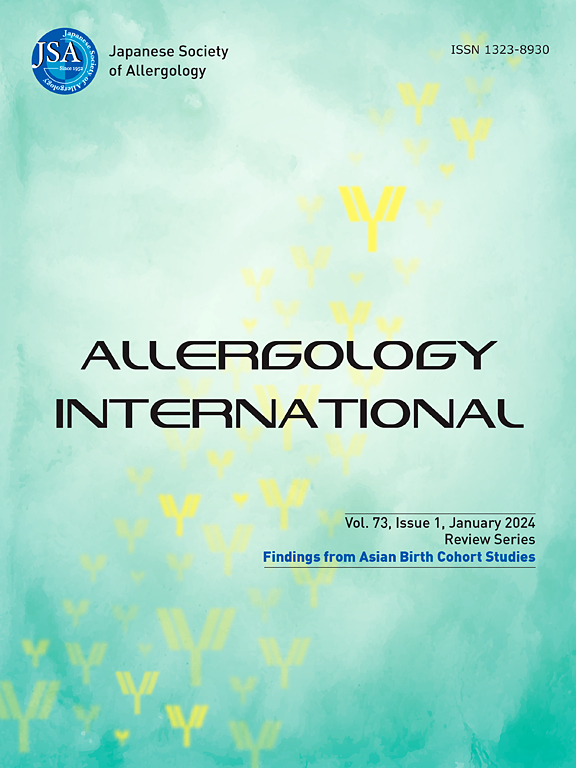综合组学重新定义过敏机制和精准医学。
IF 6.7
2区 医学
Q1 ALLERGY
引用次数: 0
摘要
变应性疾病的特点是由遗传、环境和免疫因素之间复杂的相互作用驱动的异质性。仅基于临床表型的传统分类往往无法捕获潜在的分子多样性,从而限制了治疗精度和患者结果。整合组学——包括基因组学、转录组学、蛋白质组学、代谢组学和微生物组学——已经成为重新定义疾病机制和推进精准医学的有力方法。通过将高维分子数据与临床表型相结合,组学方法能够识别疾病内型、发现生物标志物和患者分层。本文综述了临床-组学整合的最新进展,重点关注特应性皮炎(AD)作为一种典型的过敏性疾病。根据我们的研究,我们说明了组织水平的转录组学分析,结合无偏倚的计算分析,如何揭示AD的免疫异质性和治疗反应模式。哮喘和食物过敏的其他例子表明,综合多组学可以揭示基因与环境的相互作用,并阐明疾病严重程度和健康差异背后的机制。我们还解决了数据协调、隐私和互操作性方面的实际和伦理挑战,并强调了计算方法和基础设施发展在实现临床有意义的解释方面的关键作用。重要的是,将多组学数据成功转化为临床实践需要临床医生、数据科学家和基础研究人员之间反复的跨学科合作。通过桥接分子复杂性和临床异质性,整合组学正在重塑过敏研究的景观。随着技术的发展,这一框架将对开发预测模型和个性化治疗策略至关重要,最终使我们更接近个性化、数据驱动的过敏性疾病护理。本文章由计算机程序翻译,如有差异,请以英文原文为准。
Integrative omics redefining allergy mechanisms and precision medicine
Allergic diseases are characterized by heterogeneity driven by complex interactions between genetic, environmental, and immunological factors. Conventional classifications based solely on clinical phenotypes often fails to capture the underlying molecular diversity, thereby limiting therapeutic precision and patient outcomes. Integrative omics—encompassing genomics, transcriptomics, proteomics, metabolomics, and microbiomics—has emerged as a powerful approach to redefine disease mechanisms and advance precision medicine. By integrating high-dimensional molecular data with clinical phenotyping, omics approaches enable the identification of disease endotypes, biomarker discovery, and patient stratification.
This review highlights recent developments in clinical-omics integration, with a focus on atopic dermatitis (AD) as a prototypical allergic disease. Drawing from our studies, we illustrate how tissue-level transcriptomic profiling, combined with unbiased computational analysis, can uncover immunological heterogeneity and treatment-response patterns in AD. Additional examples in asthma and food allergy demonstrate how integrated multi-omics can uncover gene-environment interactions and elucidate mechanisms behind disease severity and health disparities.
We also address practical and ethical challenges in data harmonization, privacy, and interoperability, and underscore the critical role of computational methods and infrastructure development in enabling clinically meaningful interpretation. Importantly, successful translation of multi-omics data into clinical practice requires iterative, interdisciplinary collaboration between clinicians, data scientists, and basic researchers.
By bridging molecular complexity and clinical heterogeneity, integrative omics is reshaping the landscape of allergy research. As technologies evolve, this framework will be crucial for developing predictive models and personalized therapeutic strategies, ultimately bringing us closer to individualized, data-driven care in allergic diseases.
求助全文
通过发布文献求助,成功后即可免费获取论文全文。
去求助
来源期刊

Allergology International
ALLERGY-IMMUNOLOGY
CiteScore
12.60
自引率
5.90%
发文量
96
审稿时长
29 weeks
期刊介绍:
Allergology International is the official journal of the Japanese Society of Allergology and publishes original papers dealing with the etiology, diagnosis and treatment of allergic and related diseases. Papers may include the study of methods of controlling allergic reactions, human and animal models of hypersensitivity and other aspects of basic and applied clinical allergy in its broadest sense.
The Journal aims to encourage the international exchange of results and encourages authors from all countries to submit papers in the following three categories: Original Articles, Review Articles, and Letters to the Editor.
 求助内容:
求助内容: 应助结果提醒方式:
应助结果提醒方式:


